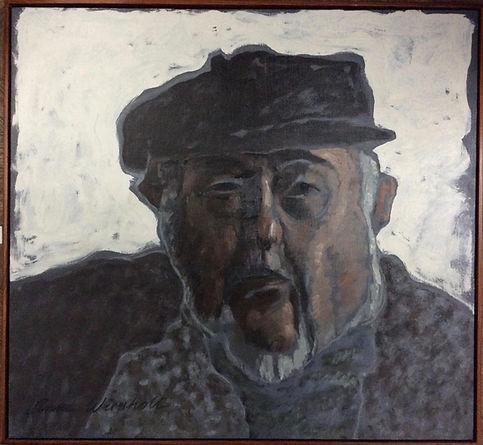ANNE WIENHOLT
1920 - 2018
Art Was Her Life
“Wash our eyes that we too can see the beauty of our ugliness.”
the Artist

Anne Wienholt, a mid twentieth century woman artist, was concerned with capturing “the curious, strange and wonderful .”
Leaving Australia to study art in New York City during WWII, she soon broke with social convention by marrying a Japanese American artist and pursuing a serious art career while raising 3 daughters.
Wienholt’s work, which spans 8 decades, showcases her capacious spirit and mastery over form. In her words: “Art is a hunt. The clues are marks on paper, shapes in metal. The quarry one self. ”
* * *
Artist's life
* * *
Anne Wienholt, an Australian artist who came of age during the mid 20th century, was concerned with “the curious, strange and wonderful.” A 1944 news article announcing she had won the New South Wales traveling art scholarship describes her penchant for “formalizing toughness and ugliness.” The painting next to her shows two men, one collapsing into the arms of the other, while a mule who has carried his human burden a long distance, stands quietly to one side. Wienholt, who grew up on a large cattle station in Queensland and became a member of the vibrant Merioola art community of Sydney, would maintain strong ties to her native Australia even after settling permanently in the United States.

Wienholt moved to New York City in 1945 at the age of 24 to study painting with Yasuo Kuniyoshi at The Art Student’s League and with Rufino Tamayo at The Brooklyn Museum Fine Art School. She studied printmaking at the Atelier 17 Project, the studio headed by Stanley William Hayter, which became a base for many famous European artists displaced by the Second World War.
Wind, Bird and Other Northern Fauna, 1948 Brooklyn Museum Collection
‘Women of Atelier 17’ authored by Christina Weyl, 2019, includes Wienholt’s etching ‘Wind Bird and Other Northern Fauna’ in a study of notable, under represented women artists of the 1940s and 50s.


Wienholt married Masato Takashige, a Japanese American artist, in 1949 during a period of widespread anti-Japanese sentiment in the US and Australia. Wienholt challenged traditional gender roles in the 1950s and 60s, pursuing a serious art career while raising 3 daughters in the home she and her husband built in the Shawangunk Mountains in New York. During these years, Wienholt moved away from painting, which proved difficult with young children underfoot, and began to work in clay. When her young daughters came into her studio, they could have some clay to model and she could continue her work. As her children grew older, she turned to sculpting in bronze using the lost wax method.


Mask with Bat Hood
After divorcing Takashige in 1968, Wienholt lived in Kingston, Jamaica where she taught at The Jamaican School of Art, and then moved to Marin County, CA in 1970. She viewed herself as primarily a sculptor for most of her career. Later in life, when working in bronze eventually became too cumbersome, Wienholt returned to painting and drawing as her primary focus. Before she died, she organized all her tools and art work, and closed down the studio in her Larkspur home.

The Pope
Wienholt traveled widely throughout her long lifetime. Her sense of history and place was shaped by art and by the people who made it. She possessed the ability to recognize who had created a piece even if she had just seen one other work by that artist. Her influences ranged widely from the European masters to the indigenous art of Australia, Papua New Guinea, Haiti, and Central America. She counseled art students who got stuck while working on a drawing to “erase the part you like the best.”
Heading 6
THe Magician

The Bird Seller
A 1984 Sydney Herald critique observed that ‘Renee’, a Wienholt bronze head, "retains every fingerprint that once lay upon the surface of its wax original, and expresses the individual character of the sitter. It is as idiosyncratic a record of the artist’s reactions to a particular individual as one of Picasso’s line drawings in the current Picasso exhibition.”


Farmer at Dusk
Wienholt’s work, spanning almost 8 decades, showcases a capacious spirit and mastery over form. In her words:
“Art is a hunt. The clues are marks on paper, shapes in metal. The quarry one self. ”

Wienholt’s work has been shown in solo and group exhibitions in Sydney, New York, and San Francisco, and appears in collections at the Brooklyn Museum and the National Gallery of Australia.

House on Fire